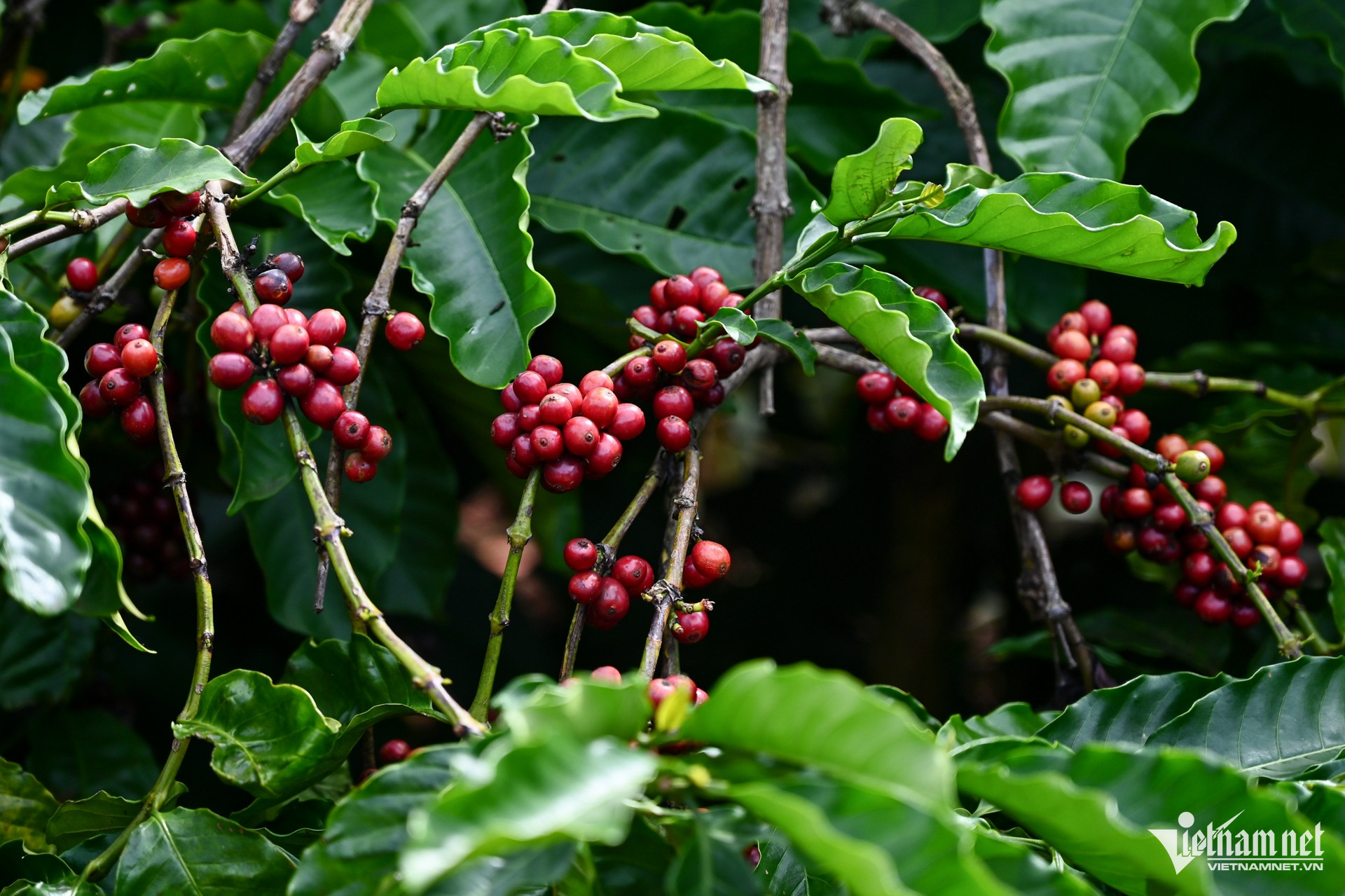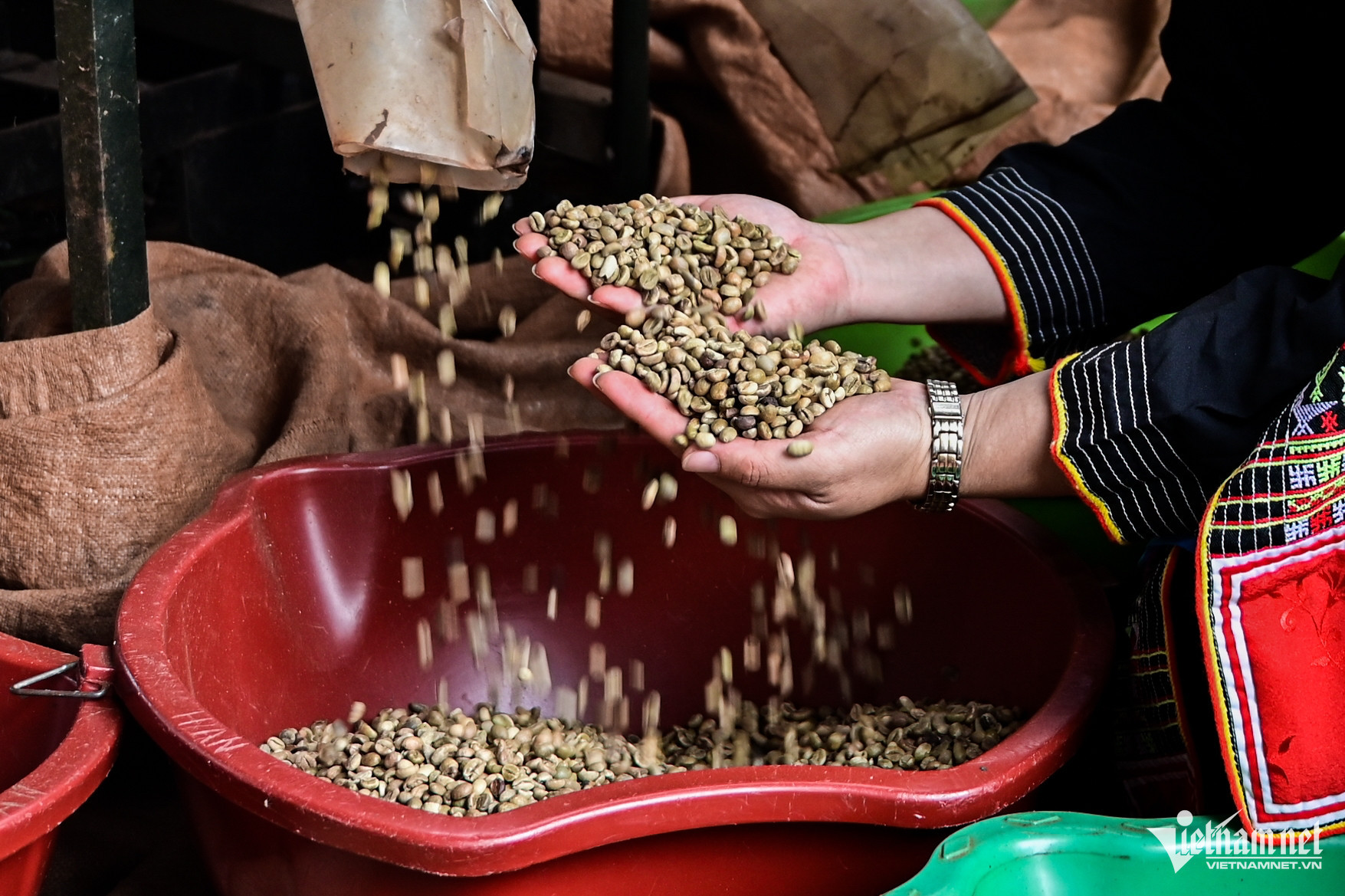Despite already earning substantial profits, many coffee farmers in Vietnam’s Central Highlands are holding back their stock, intensifying supply shortages and pushing global coffee prices to historic highs.
Nguyen Van Tao, a coffee farmer in Dak Mil, Dak Nong Province, shared that while coffee prices have surpassed 120,000 VND ($4.72)/kg, he has no plans to sell yet. Tao’s six-hectare farm is expected to yield 27 tons of coffee this season, but he intends to wait until mid-December for peak harvest and potentially higher prices.
"Thanks to earnings from intercropped durians and high pepper prices, our family finances are secure," Tao said. Last year, he adopted a similar strategy, selling coffee only when prices hit 128,000 VND/kg, resulting in a massive windfall.

This financial stability, shared by many farmers in the Central Highlands, has allowed them to bypass traditional practices of selling immediately or consigning stocks to agents, opting instead to store their coffee and await better market conditions.
Nguyen Nam Hai, Chairman of the Vietnam Coffee and Cocoa Association (VICOFA), noted that coffee bean prices in Vietnam have risen to 125,000 VND/kg, with farmers earning about 85,000 VND/kg in profit. However, many are still holding back their stock, exacerbating supply constraints during the peak harvest season.
Globally, coffee prices have soared, particularly since November 22. Arabica coffee prices have reached $6,660/ton - the highest in 13.5 years - while Robusta prices hit $5,110/ton for January 2025 contracts.
Multiple factors are contributing to the global price surge:
Lower Output in Brazil: The world’s largest coffee supplier saw a sharp drop in production due to adverse weather conditions. The USDA estimates Brazil's 2024-2025 coffee production at 66.4 million 60-kg bags, down 3.5 million bags from previous forecasts.
Delayed Harvest in Vietnam: Erratic weather has delayed coffee ripening in Vietnam, limiting exports during the critical early harvest period.
Global Supply Deficit: Global coffee production for October 2024–September 2025 is projected at 169.5 million bags, slightly below the estimated demand of 171.5 million bags.

In Vietnam, coffee exports in the first half of November reached only 20,933 tons, down 44.8% year-over-year, but the export value increased by 1.8% to over $122 million due to rising prices.
The coffee market is currently characterized by a standoff between buyers and sellers. Buyers are waiting for prices to drop, while sellers are holding out for further increases. As a result, many transactions have stalled, with traders also hoarding supplies to capitalize on potential price hikes.
As of mid-November, Vietnam had exported over 1.17 million tons of coffee, earning nearly $4.7 billion—an all-time high. Export volumes are expected to recover in the coming months as the new harvest season progresses and year-end demand rises.
However, Nguyen Nam Hai warns that coffee price trends remain unpredictable, influenced by weather patterns and fluctuating global supply and demand dynamics.
Tam An